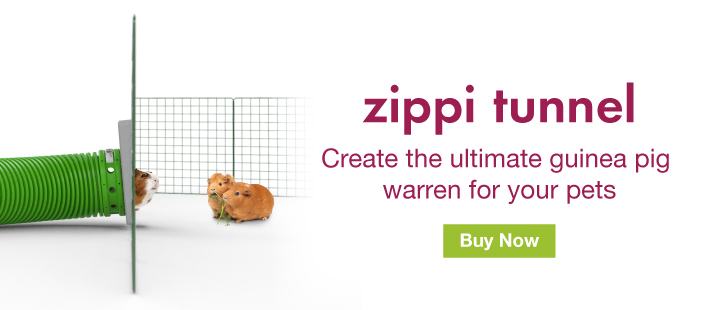Have you heard the saying if you pick a guinea pig up by its tail its eyes will fall out? Don't panic, the guinea pig has no recognisable tail!!
What about the rest of the guinea pig? Here it is from the top to somewhere near where the tail should be.
Eyes
The eyes are large and placed on either side of the head. They have a wide field of vision so that they can detect predators coming from above or from any angle on the ground. (However if they live in an eglu they are not going to need to worry about predators!) They are unable to see right in front of their noses though! Their sight is not particularly good, although they are believed to see different colours and are able to see moving objects.
Nose
Guinea pigs have a very well developed sense of smell, and they also have whiskers around their nose, eyes and mouth which are very sensitive to touch. The senses of smell and touch are very important when choosing food items (their favourite occupation is eating!) as due to their eye placement, they are unable to see what they eat.
Ears
The guinea pig has a very good sense of hearing, and can hear sound frequencies that are inaudible to the human ear. They can certainly hear you open the fridge door from their home in the garden!
Teeth
Guinea pigs have 20 teeth in total, but the ones you can see are the 4 incisors at the front of the mouth, 2 at the top and 2 at the bottom. These are used for gnawing and biting their food. The rest of the teeth in the back of the mouth are the molars, and these do the chewing. Guinea pigs chew with a side-to-side movement, and may make 200 of these movements every minute. A guinea pig is happiest when it is eating! The teeth are known as open-rooted, and grow all the time, but with all that eating and chewing they are constantly worn down.
Digestion
The guinea pig has a large digestive system to process all the food it loves to eat. First the food enters the stomach where it is mixed with digestive juices and any sugars and fat are absorbed by the intestines. Then the rest of the food passes into the caecum, which is a huge fermentation vat which takes up 50-75% of the space inside the guinea pigs abdominal cavity! Guinea pigs then produce two types of droppings, the hard ones which they leave around the cage for you to clear up, and soft ones known as caecotrophs which are full of protein and vitamins and these the guinea pig eats directly from its bottom. It may produce up to 150 of these caecotrophs to eat a day!
The Skeleton
Guinea pigs have a total of 258 bones in their body. There are 34 bones in the spinal cord, 43 in each front leg, 36 in each back leg and for you mathematicians the rest of the bones make up the skull, ribs and breastbone. Despite the number of bones in their legs, they do not jump or land very well, and a fall is likely to result in them breaking a leg, so they must always be held and carried very carefully.
The tail
There are actually seven tail bones, but they are fused so closely to the bottom (pelvis) there is no recognisable tail on these little creatures.









Comments
Misti, 4 November 2018
She’s so beautiful, the pic of the guinea Pig that is.!!! Lol I wish I could have her!!!!
Sophie, 16 July 2013
This is really helpful for my school project! 100% relieable
Sophie, 16 July 2013
This is really helpful for my school project! 100% relieable
Chantelle, 8 May 2013
Thx. This helped me alot
Silvercat101, 26 April 2013
cool i have t2 piggies.